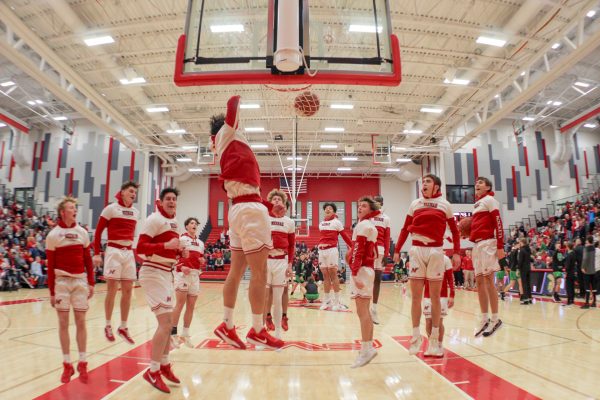Editorial: Give Student Athletes Physical Education Credit
Participation in athletics is an integral part of most students time spent in high school. According to the National Federation of State High School Associations, 55.5 percent of all high school students participate in a sport. As a student at NHS, I can verify that a large majority of students participate in athletics. All students at NHS are required to take 1.5 credits of physical education, or three semesters worth of classes. Unfortunately, only one physical education class per year applies toward these credits.
As a student athlete myself, I believe that participation in athletics should count toward physical education credits. Because of the extensive amount of time spent outside of school as a commitment to this participation, student athletes should be rewarded by an empty class in their schedule to either use as a release or tutorial, or to add an additional class they would otherwise not be able to take.
Opposition to this earned credit may argue that it would be unfair to those who are not athletically gifted and are therefore unable to make a team. Realitistically, a variety of sports do not make any cuts to the team, including cross country, track and field, golf, swimming, football, bowling and powerlifting. Changing this policy would encourage higher levels of participation in athletics, which could possibly improve our already high performing teams.
The majority of sports practices are conducted each day after school beginning at 3:30 p.m. and ending between 5:30 and 6 p.m. Competition days are either once or twice a week, lasting an average of two hours. Contrarily, a maximum of 40 minutes is spent participating in physical activity in physical education classes because of the time spent before and after class changing into athletic clothing. Even if a sports season only lasts for half of a semester, the time spent after school in athletics makes up for the time spent in a physical education class over a full semester. More often than not, students who are allowed to choose which type of activity they are in, like in a sport, are more likely to participate and work harder than in a class where they are given no control as to what types of games they are playing. Students get the same, if not more, amount of physical activity while in sports than in physical education classes.
A national survey conducted by the University of Phoenix College of Education found that high school teachers assign an average of 3.5 hours of homework per night. Students who are in athletics are likely not able to start their homework until between 6:30 and 7 p.m., as they need to eat dinner and shower after practice. This means that if they work for the 3.5 hours straight without taking any breaks, homework will not be completed until around 10:30 p.m. This does not allow student athletes for any time spent with family or friends, or any time to work a part time job as many students do to earn extra money. If student athletes were granted room in their schedule for a tutorial or release, they could finish at least an hour of this homework during this period in the school day. By making more efficient use of a class period previously taken up by a physical education class, student athletes would be afforded an opportunity for more free time each night.
Student athletes should be rewarded for the time spent of of school spent on participating in their sport by earning physical education credits. This would allow student athletes to complete homework during the school day instead of waiting until late in the evening to start, as well as encourage others to participate in athletics. The level of commitment shown by these students is unlike any other and deserving of this small yet significant reward.






